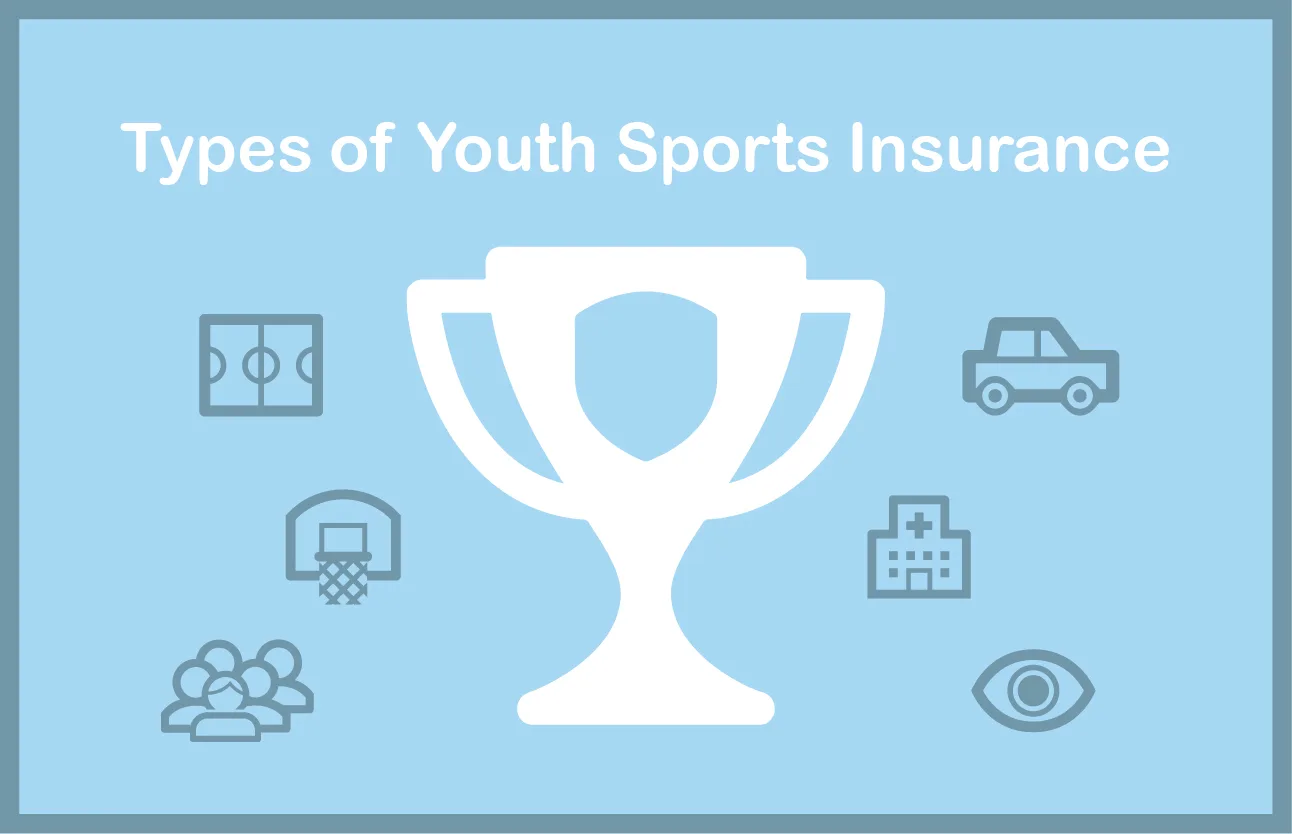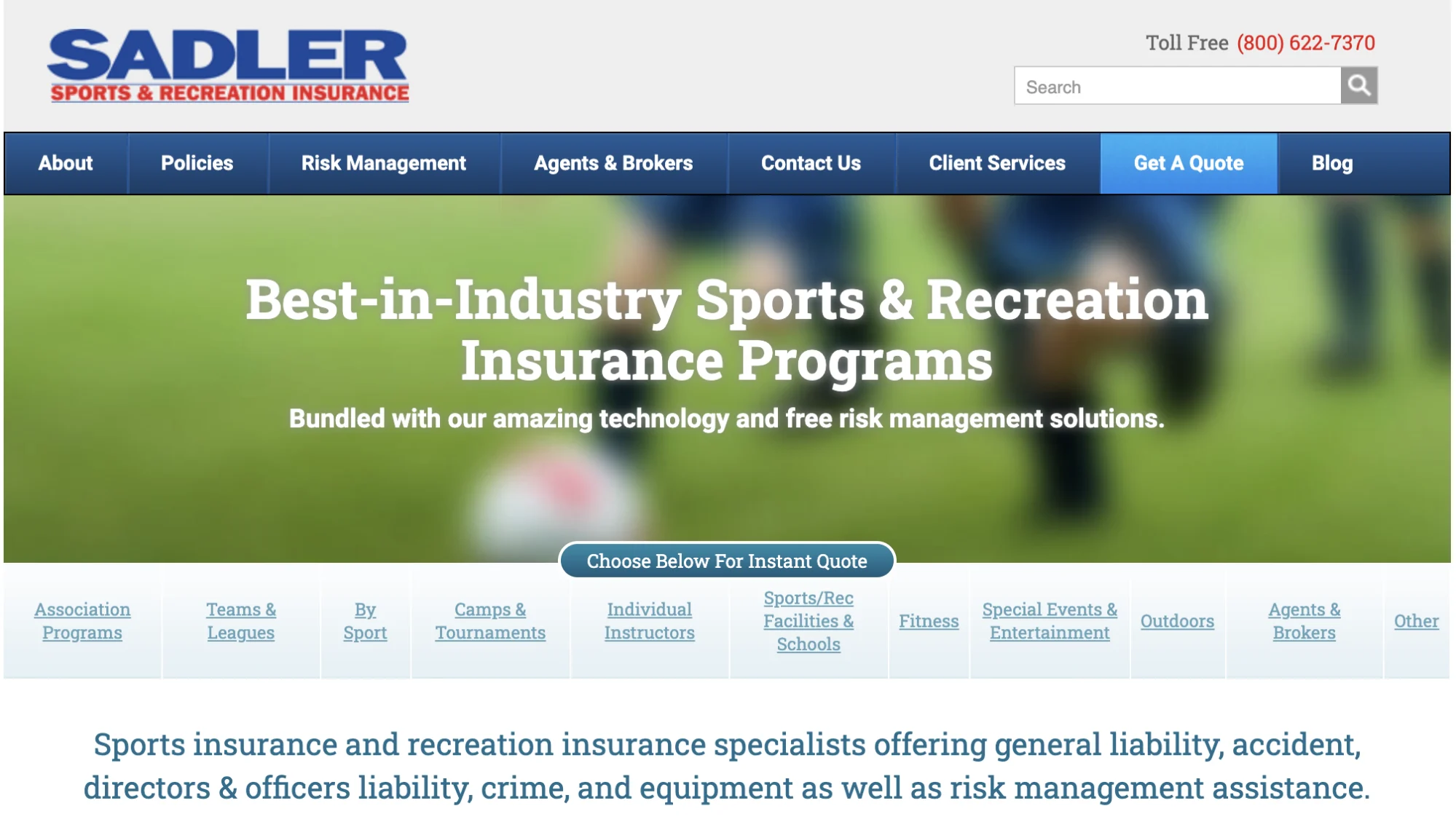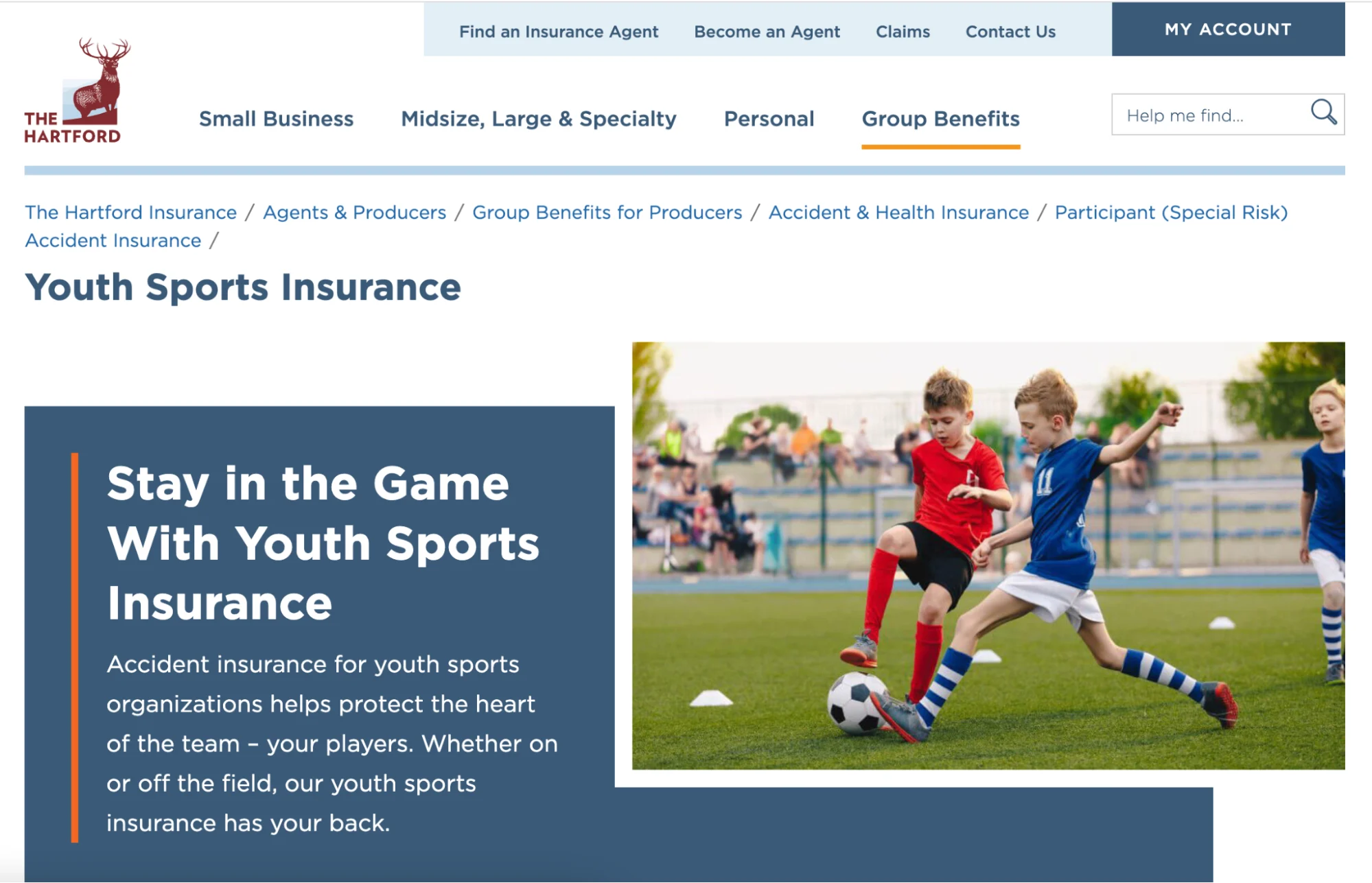What Types of Youth Sports Insurance Do You Need? + Top Providers
Sierra Swigert Last updated: July 28, 2023


Table of Contents
According to the National SAFE KIDS Campaign and the American Academy of Pediatrics, more than 3.5 million children ages 14 and younger get hurt annually playing sports or participating in recreational activities. Although injuries can’t always be prevented, you can take steps to ensure your players and organization are protected.
Youth sports insurance is essential as it provides financial protection for participants, organizations, and volunteers involved in youth sports teams. It covers medical expenses, liability claims, and legal defense costs, which can shield individuals and organizations from potential financial burdens. It can also ease parental concerns and show that your organization is reputable.
This post will cover what youth sports insurance is, how coverage works, which types to carry and how to find the best coverage for your organization.
What is youth sports insurance?
Youth sports insurance is typically purchased by sports organizations to provide protection for their participants, volunteers, and staff members. The specific coverage and policy terms may vary depending on the insurance company and the needs of the organization or participants involved.
How does insurance work in youth sports?
Insurance, as a basic concept, is when someone pays to be protected from a risk that may or may not occur. There are many types of insurance and some are even required by law. Some types of insurance, such as auto, are more expensive because of how likely it is that an accident will occur.
Sports insurance is no different in that the insured is paying to be protected from risk. Your organization would pay a monthly or annual fee to an insurance provider to be protected. In the event that the risk does occur, the organization would pay a small deductible and then the insurance company would pay the rest.
It’s important for a youth sports organization to have insurance because it protects both the organization and the individual. Risks in youth sports can include an accident involving a player, car damage from a foul ball and even field damage due to a natural disaster.
Types of insurance to carry

When starting a youth sports organization, you’ll need to determine which types of insurance you should have. Below, we’ll cover different types of youth sports insurance policies and why they’re important to have.
Accident
Accident insurance is important for youth sports organizations to have because of the increased risk of injury that can happen when a child is playing contact sports. Even in sports where a child is not actively coming into contact with another player, they can still be injured through a misstep or rogue ball.
Accident medical insurance pays for medical bills not covered through the child’s health insurance in the event of bodily injury during sports activities . Not all children have medical insurance and medical bills can be astronomical depending on the circumstances.
With accident insurance, the injured player and their family would receive money from the insurance company. This prevents your organization from paying out of pocket for these expenses.
General liability
General liability insurance covers lawsuits that arise from common mishaps, such as spectator and player injuries. It covers lawsuits that allege that a spectator or player has suffered damages due to the negligence of a sports organization. The policy also provides an attorney for legal defense and will pay up to the policy limits in the event of settlement or adverse jury verdict, meaning the jury sided against you.
Mishaps could arise from a venue being damaged during a game, a player becoming hurt on the field or even a parent falling down stadium stairs that haven’t been maintained. These claims are frequent and can be severe so it’s important to have general liability coverage.
Directors and Officers (D&O) Liability
Youth sports insurance can also protect an organization’s directors, officers, employees and volunteers. Directors and Officers Liability Insurance can protect those individuals from lawsuits arising from situations such as discrimination charges, financial mismanagement claims and regulatory violations.
This policy also provides an attorney for the defense and pays for the costs of settlement or an adverse jury verdict. It’s important to have this type of coverage because the high attorney fees must be paid despite the outcome of a case.
Property and equipment insurance
Property and equipment insurance for youth sports organizations is designed to protect the organization's physical assets, such as buildings, equipment, and other property, against various risks. These risks can include fire, theft, vandalism, natural disasters, water damage and more.
Equipment insurance coverage provides protection for the organization's sports equipment, such as balls, uniforms, goals, nets, training gear, and other necessary items. It typically covers repair or replacement and may also cover equipment used off-premises, such as during away games or tournaments.
Property insurance protects the organization's physical structures and buildings against damage or loss. It may include coverage for repairs, reconstruction, or replacement of the sports facilities in the case of covered events. It's important to accurately assess the value of the buildings and ensure they are adequately insured to cover potential property damage or loss.
Crime insurance
Crime insurance covers a financial loss suffered by the youth sports organization as a result of dishonesty, forgery, computer fraud, or theft of cash and securities by employees or volunteers.
It’s important to have risk management controls in place to minimize the likelihood that your organization falls victim to crime. For example, the person who reconciles the bank account should not be the same person who deposits or withdraws funds. By having this check and balance in place, you’re less likely to have someone defraud your organization.
Although not all lawsuits filed against youth sports organizations are legitimate, this is another reason to make sure all individuals are completing background checks. Financial investigations are common in the world of youth sports so putting in extra recruitment effort can save your organization from future legal troubles.
Business auto insurance
Your sports organization should have a business auto policy on all owned, non-owned and hired vehicles. A league-owned vehicle is titled in the organization's name, while a personal vehicle is titled in the individual's name but may be used by a staff member to perform duties for the league or team. A hired vehicle is one that is rented from a car company or borrowed.
While auto insurance is required by all licensed drivers, your organization will need to have more to ensure that the business is not liable in the case of damage to a vehicle or bodily injury.
Where to find youth sports insurance
Once you determine your insurance needs, search for an insurance provider for your organization. Below are some insurance agencies you can begin your search with!
Sadler Sports and Recreation Insurance: This company was established in 1957 and specializes in insuring sports and recreation organizations. They offer online quotes and can begin coverage immediately in most cases. They also serve on the Medical and Safety Advisory Committee of USA Baseball.

The Hartford: The Hartford was established in 1810 as a fire insurance company. Since then, they have offered a variety of insurance plans with youth sports protection being one of them. They recommend contacting an insurance agent for their company to discuss plans and policies.

Pattern: Pattern Insurance provides both Participant Accident Insurance and Registration Protection Insurance to youth sports participants.
Participant Accident Insurance offers parents the ability to reduce their medical bills incurred due to their child getting injured from participating in a youth sports activity.
Registration Protection Insurance is a safety net for young athletes. If a child gets sick or injured, their registration fees will be reimbursed by Pattern.

Pomi: Pomi was officially formed in 2020 from their parent company’s Accident and Health division, Great American Insurance Company. One of their insurance program segments that they offer is for youth sports and you can get a quote online. Their coverage spans from athletes to umpires.

You can also look up local insurance agencies in your area or even inquire with local teams to see who their policies are through. Only you know what’s best for your organization so we’d recommend gathering multiple quotes.
How to get the best terms
It can be overwhelming to choose a policy that best fits your sports organization. Here are some tips to help:
- Gather Multiple Quotes: this will help you understand what to budget for your payments.
- Be Honest with the Numbers: you’ll need to provide the number of employees and players your organization has.
- Determine the Bare Minimum: at the very least, you should have accident and general liability because of how often people can get injured in youth sports.
Once you choose your provider and coverage, you should be sure to let parents know by having a dedicated page on your website. This will allow them to understand the steps you’ve taken to protect your players. Having insurance offers reassurance to participants and their families and fosters trust and confidence in your sports organization.
Final thoughts
Although we recommend having online waivers, they aren’t enough to protect your sports leagues in many cases. Having insurance is the best way to ensure your organization and its players, volunteers and employees are protected.
Our team at Jersey Watch can help your organization work through these moving parts by having a dedicated website, online registration tools and communication with parents. Sign-up for a free account to get started today!
DISCLAIMER
Please keep in mind that this information is not intended as legal advice, and whenever making decisions for your program it is always best to consult with an attorney. Coverage descriptions of policies mentioned above are summaries. Please reference the actual policies for a complete description of policy limits, coverages, exclusions, and conditions.